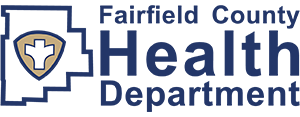INFANT SAFE SLEEP/CRIBS FOR KIDS
Cribs for Kids
Through the Cribs for Kids program, we are distributing safe sleep kits that include a cribette, a fitted sheet, sleep sack, and safe sleep educational materials.
There are about 3,500 sleep-related deaths among U.S. babies each year. Since the late 1990s recommendations were introduced to place babies on their back to sleep.
Fairfield County Health Department encourages all parents to follow these easy guidelines from the American Academy of Pediatrics and ensure that every baby is happy, healthy, and safe.
To prevent infant sleep deaths, follow the "ABCs" of Safe Sleep:
A- Alone
B- Back
C- Crib
To receive a free crib kit, you must meet the eligibility criteria below.
Eligibility guidelines:
- • Must be a Fairfield County resident.
- • Enrolled in WIC or Medicaid.
- • At least 32 weeks pregnant or have a child under 1 year old.
COMPLETE THE ENROLLMENT FORM HERE
For more information, please contact Hannah Josefczyk, RA, CHES.
- • Sleep-Related Infant Deaths: Updated 2022 Recommendations for Reducing Infant Deaths in the Sleep Environment (Policy Statement)
- • What Does a Safe Sleep Environment Look Like? - NIH
- • Safe Sleep for Babies - CDC
- • Safe sleep for your baby - March of Dimes

Learn why it’s safest for baby to follow the ABCs of safe sleep – Alone. Back. Crib. Every baby, every sleep!
- What does a safe sleep environment look like?
Safe Sleep Environment Brochure
Infant Safe Sleep Tips
Follow these tips and explore the rest of SafeSleep.Ohio.gov to learn why of the ABCs of infant safe sleep are safest for baby:
- • The safest place for your baby to sleep is in the room where you sleep, but not in your bed.
- • Never place babies to sleep on adult beds, chairs, sofas, waterbeds, pillows, cushions or soft surfaces.
- • Dress your baby in sleep clothing, such as a sleep sack, and do not use a blanket.
- • Avoid letting the baby get too hot. Keep room temperatures in a range comfortable for a lightly clothed adult.
- • Infants should receive all recommended vaccinations.
- • Breastfeeding is recommended to help to reduce the risk of SIDS.
- • Avoid smoke exposure during pregnancy and after birth. Place the crib in an area that is always smoke free.
- • Supervised, awake tummy time is recommended daily to facilitate development.
- • Consider using a pacifier at nap time and bed time, once breastfeeding is well established.
- • Talk to those who care for your baby, including child care providers, family, and friends, about placing your baby to sleep on his back for every sleep.
- • Obtain regular prenatal care to reduce the risk of SIDS even before birth.
- • Avoid alcohol and illicit drug use during pregnancy and after birth.
